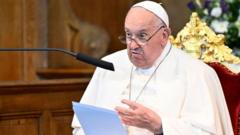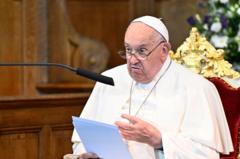Pope Francis' recent appointment of Sister Simona Brambilla marks a historic moment for women in the Roman Catholic Church, as she becomes the first woman to lead a major Vatican department.
Sister Simona Brambilla Makes History as First Woman to Lead Vatican Department

Sister Simona Brambilla Makes History as First Woman to Lead Vatican Department
Pope Francis appoints Sister Simona Brambilla, pushing for greater female leadership in the Catholic Church.
Pope Francis has made a significant move towards inclusivity within the Catholic Church by appointing Sister Simona Brambilla as the head of the Dicastery for Institutes of Consecrated Life and Societies of Apostolic Life, overseeing both male and female religious orders. This appointment not only positions Brambilla as a trailblazer but also aligns with Francis’ ongoing commitment to enhance women’s representation in leadership roles.
Sister Brambilla, at 59 years old, now holds the highest title ever awarded to a woman in the Vatican, a notable step considering that she manages departments that comprise over a quarter of the world’s priests. While the news has been received positively by many, including theologian Anne-Marie Pelletier who heralded it as a "really important moment," others raised concerns regarding the dual leadership structure.
Alongside Sister Brambilla, Cardinal Angel Fernandez Artime has been appointed as pro-prefect, a decision some critics perceive as potentially undermining her authority. Church historian Lucetta Scaraffia expressed reservations about the co-appointment, arguing it appears to overshadow Brambilla's role with an overseeing figure, likening the arrangement to placing "a custodian who can control her."
Despite these critiques, Sister Brambilla will manage a department that plays a fundamental role within the Vatican, responsible for guiding more than 599,228 women in religious orders as of 2022, alongside thousands of male priests from prominent orders. This landmark appointment is a continuation of Pope Francis' efforts to redefine women's roles in the church and could pave the way for future advancements in a traditionally male-dominated hierarchy.





















